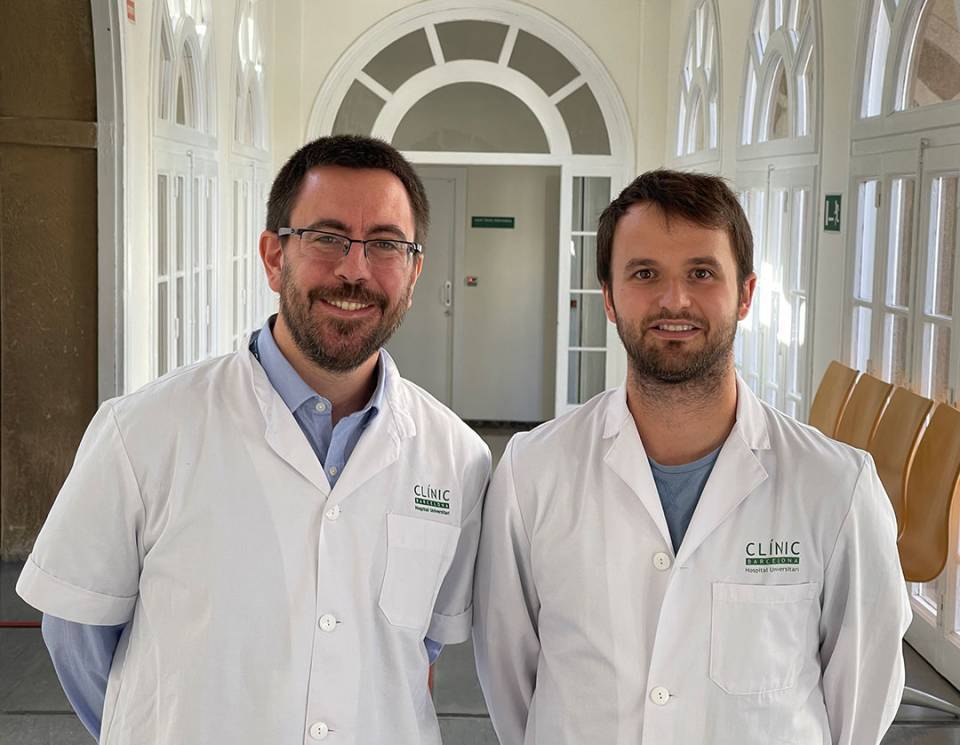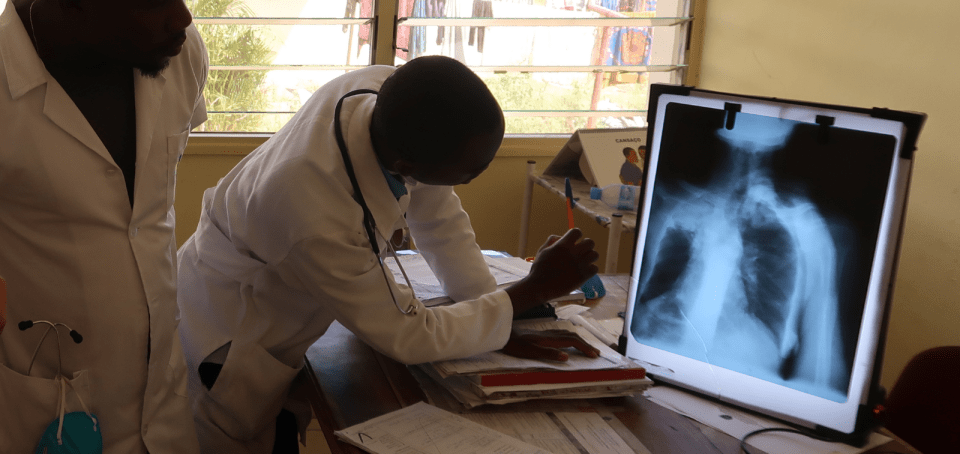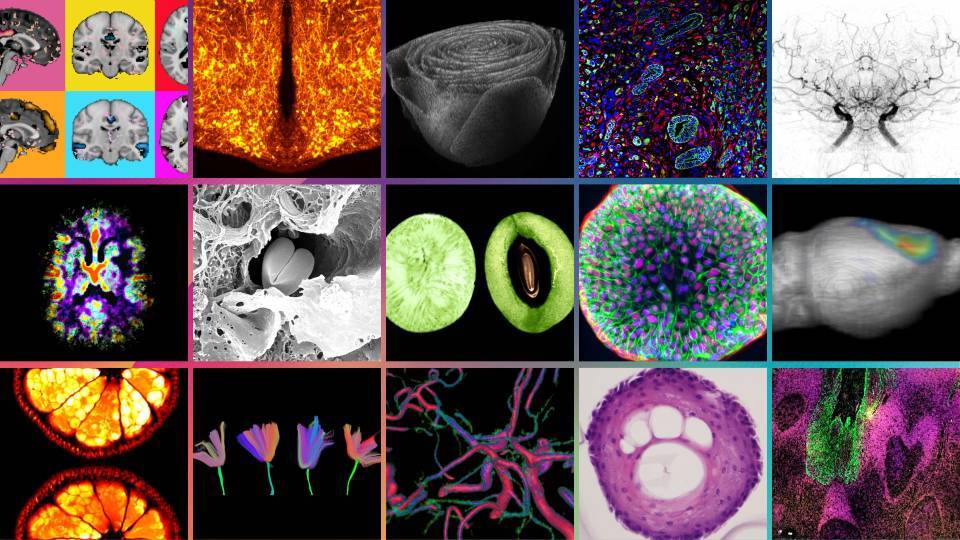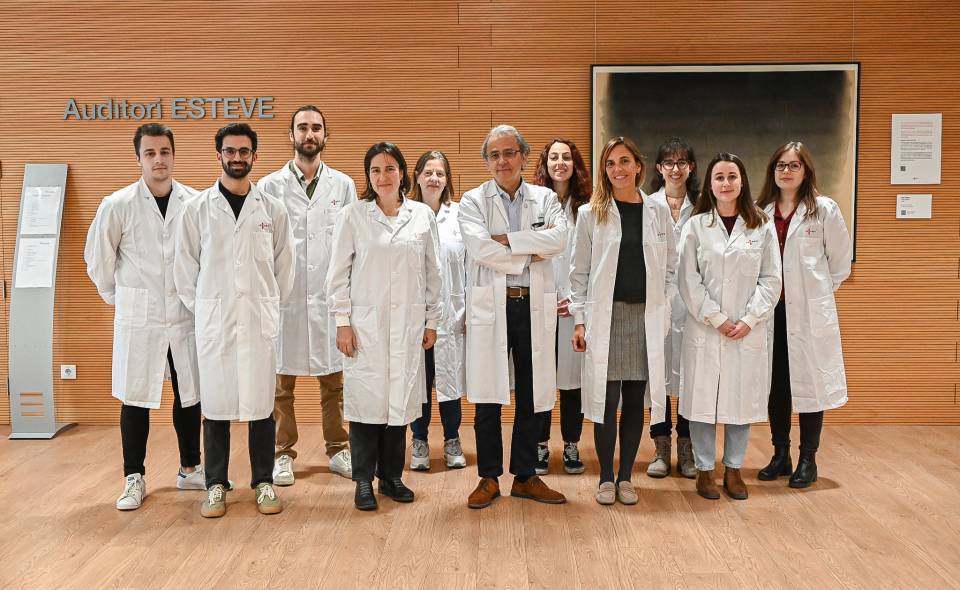The study, published in the journal Ophthalmology Retina, was coordinated by Dr. Javier Zarranz-Ventura, ophthalmologist at the Hospital Clínic and researcher in the IDIBAPS Ocular Inflammation: Clinical and Experimental Studies group. The first author of the study is Dr. Jordi Izquierdo-Serra, from the same team, as part of his doctoral thesis directed by Dr. Zarranz-Ventura and Prof. Ricardo Casaroli-Marano.
Age-Related Macular Degeneration or AMD is a disease of the retina, specifically of the macula, which affects central vision and can produce blind spots and distorted vision. There are three types of AMD, depending on the stage of the disease: early, intermediate and advanced. One of the most advanced forms is the wet form, also called neovascular, which is characterized by the abnormal growth of blood vessels under the macula, leading to image distortion.
Anti-angiogenic therapy is a specific type of treatment that inhibits the growth of these abnormal blood vessels. “In the treatment of AMD, anti-angiogenic therapy has represented a before and after in the treatment aimed at controlling the neovascular or wet form of the disease”, says Javier Zarranz-Ventura.
Analyzing data from 1,600 eyes to predict response to treatment
For the study, the researchers analyzed whether the type of neovascular lesion in the eye influences the efficacy of AMD treatment with anti-angiogenic therapy, with the aim of finding out whether classifying the lesion at the onset can enable us to predict a given patient's response to treatment.
To do this, they used data collected in the national registry of the Fight Retinal Blindness Spain (FRB Spain) project, of which the Hospital Clínic Barcelona is the coordinating centre, analyzing 1,600 eyes classified according to the type of neovascular lesion. The registry currently includes data on over 8,000 treated eyes from over 50 hospitals in Spain.
The first step was to classify the type of neovascular lesion within the registry, based on the four existing groups (according to their location). Then, the initial and final vision, the number of injections, the number of visits and the number of visits with active lesions were compared, as well as the drug used in each group.
The results show that the lesions have different clinical characteristics. “We have shown that type 2 lesions start treatment with a poorer level of vision, but end up with better vision, type 1 lesions show greater gains but end up with poorer final levels, and type 3 lesions become inactive more quickly than other types”, says Javier Zarranz-Ventura.
All these data allow for a more accurate prognostic estimate to be established at the time of initial diagnosis, which enables care to be personalized for each patient by characterizing the type of neovascular lesion at the start of intravitreal treatment.
Article reference:
Izquierdo-Serra J, Martin-Pinardel R, Moll-Udina A, Bernal-Morales C, Garay-Aramburu G, Sanchez-Monroy J, Arruabarrena C, Fernandez-Hortelano A, Figueroa MS, Abraldes M, Lavid de Los Mozos FJ, Zapata MA, Ruiz-Moreno JM, Broc-Iturralde L, Gonzalez-Guijarro J, Escobar-Barranco JJ, Gallego-Pinazo R, Parrado-Carrillo A, Dotti-Boada M, Alforja S, Figueras-Roca M, Barthelmes D, Gillies MC, Casaroli-Marano RP, Zarranz-Ventura J; Fight Retinal Blindness Spain (FRB! Spain) Users Group. Macular Neovascularization type influence on anti-VEGF intravitreal therapy outcomes in Age-related Macular Degeneration. Ophthalmol Retina. 2023 Nov 2:S2468-6530(23)00573-0. doi: 10.1016/j.oret.2023.10.022.




